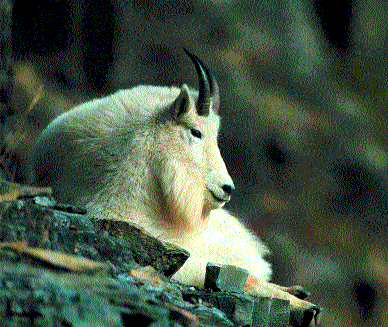A great array of wildlife
Photos by Donald M. Jones/Great Gray Imagery
 By Billie Jean Plaster
By Billie Jean Plaster
Some rare and unusual wildlife live in North Idaho, sometimes in surprising abundance, according to Jim Hayden, Idaho Department of Fish and Game regional wildlife manager. Cougars may be endangered in the Florida Everglades, but here they're plentiful; an estimated 1,000 or so live in the five northern counties. Bobcats, a much smaller cousin, are also plentiful. The Canada lynx, listed in March as a threatened species, is the subject of ongoing studies and has been verified as a resident of the Selkirk backcountry. "They move huge mileages in search of food and will disperse in food shortages," Hayden says.
Four populations of mountain goats occupy the steep slopes in these areas: the Selkirks of northern Boundary County, west Cabinets, Bernard Peak across from Farragut State Park and Snow Peak southeast of St. Maries.
Several hundred elk live in the west Cabinet and Purcell mountains. And the larger cousin to white-tailed deer, the mule deer, finds habitat in the higher elevations. Blue grouse, too, fly high in the Selkirks. The rare, colorful harlequin duck is found on several streams in the Priest Lake drainage and on the Moyie River northeast of Bonners Ferry, Trestle Creek and Spring Creek near Clark Fork. These small, long-lived ducks nest here and migrate to the West Coast in August.
"They're a neat duck to see," Hayden says.
Loons nest on Priest and Pend Oreille lakes in April and May and then leave in October. Osprey, too, nest near water and migrate south in winter.
Moose are definitely on the loose, here, as the sub-species known as the Shira. Calves, twins usually, are born around June 1. "The two northern counties are the best moose habitat in the state and have the highest density," Hayden says.
The fisher and wolverine, both rare weasel species, are also residents. The fisher is typically found below 3,000 feet, while the wolverine is found in higher elevations.
Although no wolves live here, they do move through the area on "sightseeing jaunts." The closest resident packs are in the Nine-Mile drainage west of Missoula and just west of Glacier National Park in Montana.